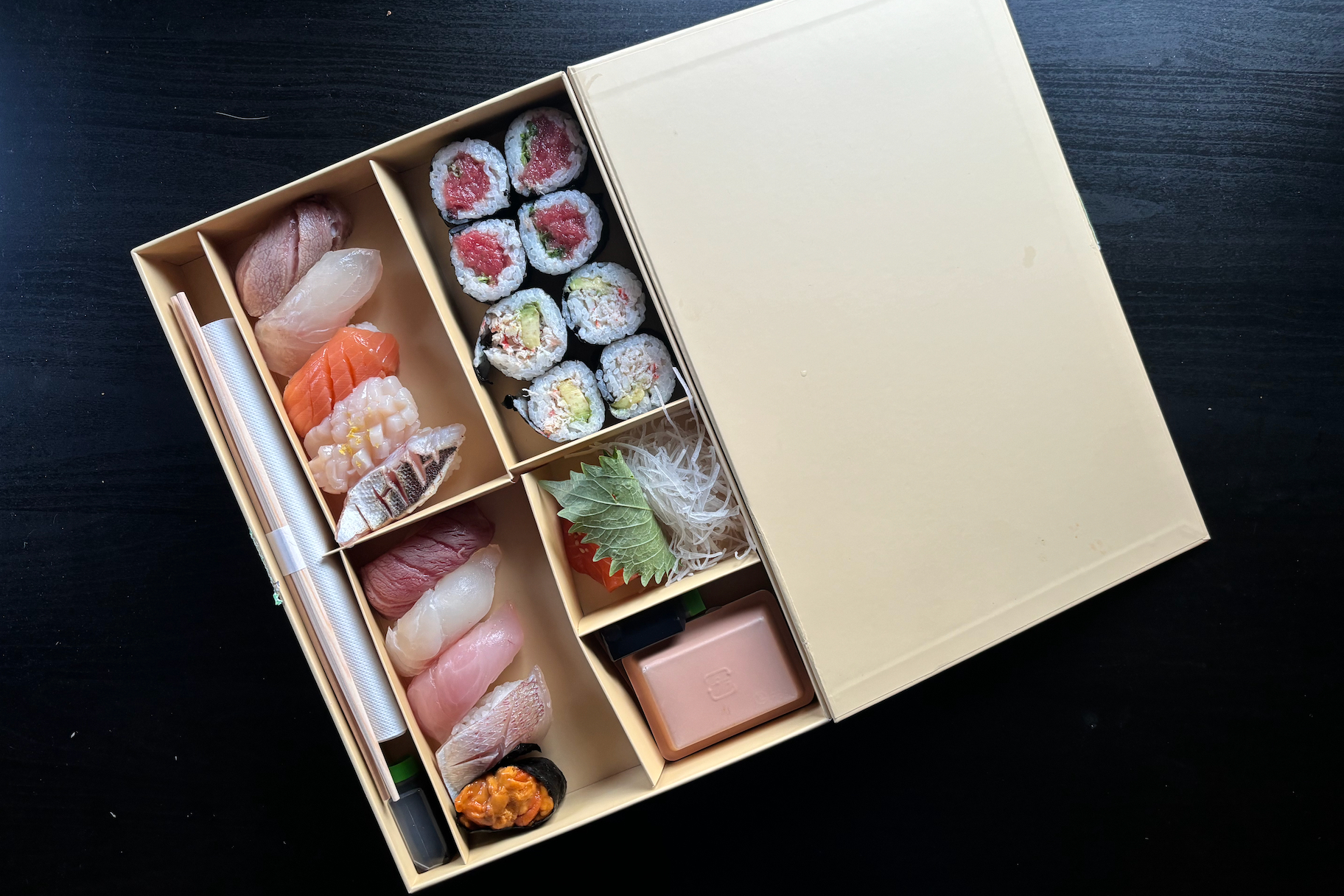
If you’re a fan of high-level omakase sushi and Japanese cuisine but looking for that experience in the comfort of home, Jōji Box in New York City might be the answer you’ve been looking for. The grab-and-go (or delivery) operation of one Michelin Star Jōji, Jōji Box is all about high-quality sushi delivery at a reasonable price. Located in Midtown’s One Vanderbilt building and the iconic Grand Central Terminal, Jōji Box (conveniently situated next to Jōji itself) is a sushi experience worth investigating.
We spoke with George Ruan, one of the three partners and chefs at Joji and Joji Box, to learn about the operation and what it takes to make Michelin-star quality sushi to go.
How Michelin-starred sushi is made for takeout

There is, of course, something inherently difficult about packaging raw fish for sushi takeout. “Sushi is best when enjoyed the moment it’s made — the fish is fresh, and rice is at an optimal temperature and texture,” explains Ruan. “When sushi is taken away, it’s very challenging to maintain the same quality and standard. From the way we cook the rice to the temperature we keep the fish and even the quantity we create is carefully coordinated to ensure it’s the freshest standard we can deliver in our sushi to-go.”
In order to maintain quality, Jōji Box sources 90% of their fish from Toyosu fish market in Tokyo, along with using their own custom-made box and packaging. There are several options at Jōji Box, including flights (ranging from $20 to $23), consisting of four pieces of nigiri and half a maki roll, to chirashi boxes ($28 to $48). But for the full experience, the omakase box is the best. At $60, it includes 10 pieces of chef’s selection nigiri and sashimi, along with half a negi toro roll and half a snow crab roll (also includes a side of wakame seaweed salad).
When we sampled the omakase box, we first noticed the layout — every element, from the nigiri to the neatly folded napkin, was elegantly packaged. The box was also sturdy that we weren’t worried about damaging the sushi during a commute. Two small plastic containers of soy sauce are provided, along with gari (pickled ginger) and a generous serving of real wasabi, which is far more nuanced in flavor and less harsh than the standard wasabi paste.
For high-level sushi, it’s all about the rice

For true sushi lovers, not only will the quality of the fish used by Jōji Box be noticeable, but the rice will also stand out. “It’s important to have high quality, fresh fish and ingredients, but rice is truly an unsung hero when it comes to sushi,” explains Ruan. “The texture, temperature, and vinegar has to be carefully measured, cared for and perfected to complement the fresh ingredient. That is why many sushi chefs are first trained on cooking the rice for years before they even approach the other ingredients.”
At Jōji Box, they use a mixture of two types of rice: Japanese Koshihikari and Nanatsuboshi. And if you’re interested in learning more about Japanese rice, we happen to have a guide on making sushi rice.
Editors' Recommendations
- The best fried chicken recipe you will ever make
- The iconic Benjamin Steakhouse shares its best meat cooking tips
- This is the best wood for grilling and smoking, according to an expert
- Learn how to make perfect grill marks every time
- How to cook soft-shell crab at home



